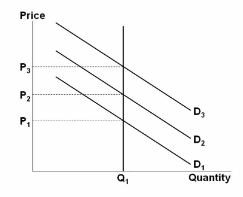Marginal physical product of labor equals
A. the wage divided by marginal cost.
B. marginal cost times the wage.
C. marginal cost divided by the wage.
D. the wage.
Answer: A
You might also like to view...
In 2008, several banks had a:
A. solvency problem, and the Fed kept them all from going bankrupt. B. confidence problem, and would not lend enough to keep from going bankrupt. C. solvency problem, and eventually went bankrupt as a result. D. reserve problem, and did not have enough funds on hand to lend to keep from going bankrupt.
Why might the market supply of workers increase when wages increase in a particular occupation or location?
What will be an ideal response?
Suppose the G8 nations decide that the dollar is too strong (high in value) relative to the yen. These nations might:
A. use official reserves of yen to buy dollars. B. use official reserves of dollars to buy yen. C. encourage Japan to print more yen. D. encourage the United States to increase interest rates.
The figure depicts a situation where:

A. prices are sticky, but output is flexible.
B. prices are flexible, but output is constant.
C. prices and output are both flexible.
D. prices are sticky and output is constant.